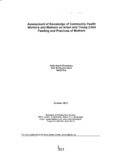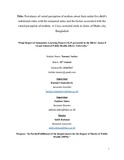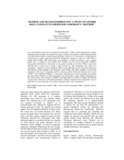| dc.contributor.author | Nguyen, Phuong | |
| dc.contributor.author | Scott, Samuel | |
| dc.contributor.author | Khuong, Long | |
| dc.contributor.author | Pramanik, Priyanjana | |
| dc.contributor.author | Ahmed, Akhter | |
| dc.contributor.author | Afsana, Kaosar | |
| dc.contributor.author | Menon, Purnima | |
| dc.date.accessioned | 2022-05-22T04:31:12Z | |
| dc.date.available | 2022-05-22T04:31:12Z | |
| dc.date.copyright | 2020 | |
| dc.date.issued | 2020-05-29 | |
| dc.identifier.citation | Nguyen, P., Scott, S., Khuong, L., Pramanik, P., Ahmed, A., Afsana, K., & Menon, P. (2020). Why are adolescent mothers more likely to have stunted and underweight children than adult mothers? A path analysis using data from 30,000 Bangladeshi mothers, 1996–2014. Oxford Academic, 4(Supplement_2), 1463. doi:https://doi.org/10.1093/cdn/nzaa061_091 | en_US |
| dc.identifier.uri | http://hdl.handle.net/10361/16640 | |
| dc.description | This article was published in Current Developments in Nutrition by Oxford Academic [ © Oxford University Press 2020.] and the definite version is available at: https://doi.org/10.1093/cdn/nzaa061_091 The Journal's website is at: https://academic.oup.com/cdn/article/4/Supplement_2/1463/5845785 | en_US |
| dc.description.abstract | Objectives:
Adolescent pregnancy is a major global concern due to its adverse effects on maternal and child health and wellbeing. Bangladesh has one of the highest rates of adolescent pregnancy globally. We sought to examine trends in adolescent pregnancy and associated factors in Bangladesh in the last two decades, and to understand why children of adolescent mothers are at high risk of poor growth.
Methods
Data were from 6 rounds of Bangladesh Demographic and Health Survey (1996–2014). Women aged 15–49 years who gave birth in the 5 years preceding each survey (n = 30,331) were classified based on age at first birth: ≤19 years (adolescence), 20–24 years (young adulthood), and ≥25 years (adulthood). Trend analysis was used to assess the progress over time. Multivariable regression and structural equation models were used to understand how adolescent pregnancy is linked to child undernutrition through maternal nutritional status, education and bargaining power, health service use, child feeding and living conditions.
Results
Adolescent pregnancy has declined slowly, from 84% in 1996 to 73% in 2014. Children born to adolescent mothers had lower z-scores for height-for-age (mean difference: −0·64 SD), weight-for-age (−0·45 SD), and higher prevalence of stunting (18 percentage points [pp]) and underweight (12pp) than children born to adult mothers. Compared to adult mothers, adolescent mothers were shorter (−0·8 cm), lighter (−6.9 kg), more likely to be underweight (+14pp), had lower education (−4·3 years), less decision-making power (−9pp), and lived in poorer households (−0·79 SD) with poorer sanitation (−23pp) (all P < 0.05). Adolescent mothers were less likely to access ANC (−20pp), institutional delivery (−42pp), postnatal care services (−24pp) and had poorer complementary feeding practices (−15pp). In path analyses, these intermediate factors explained 66% of the association between adolescent pregnancy and child anthropometry, with the strongest links being through women's weight, education, socioeconomic status and complementary feeding practices.
Conclusions
Adolescent pregnancy is still the norm in Bangladesh. Policies and programs to address poverty and improve women's education can help to improve women's health, reduce early childbearing and break the intergenerational cycle of poverty and undernutrition. | en_US |
| dc.language.iso | en_US | en_US |
| dc.publisher | Oxford Academic | en_US |
| dc.relation.uri | https://academic.oup.com/cdn/article/4/Supplement_2/1463/5845785 | |
| dc.subject | Adolescent Mothers | en_US |
| dc.subject | Adult Mothers | en_US |
| dc.subject | Underweight Children | en_US |
| dc.title | Why are adolescent mothers more likely to have stunted and underweight children than adult mothers? A path analysis using data from 30,000 Bangladeshi mothers, 1996–2014 | en_US |
| dc.type | Journal Article | en_US |
| dc.description.version | Published | |
| dc.contributor.department | Brac James P. Grant School of Public Health | |
| dc.identifier.doi | https://doi.org/10.1093/cdn/nzaa061_091 | |
| dc.relation.journal | Current Developments in Nutrition | |




